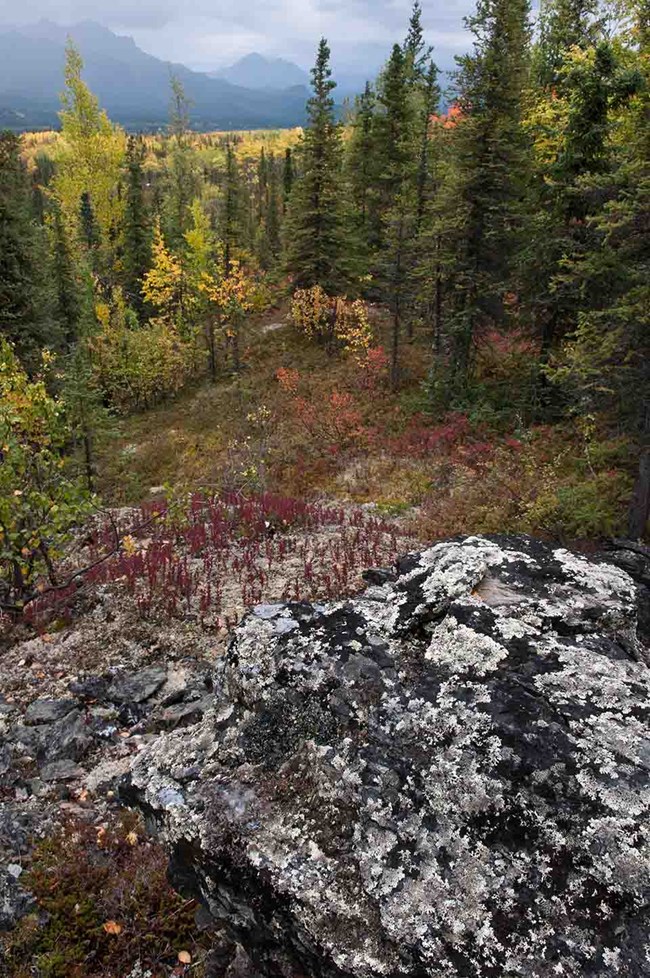
NPS/Tim Rains The flora of Central Alaska Network parklands, including vascular plants, bryophytes, and lichens, contains more than 2,000 species. In addition to its intrinsic value, vegetation is important because it forms the foundation of all terrestrial ecosystems; most other forms of life depend on plants either directly or indirectly. In addition, many plant species (such as trees and shrubs) define physical structure of habitat for other species. Each species plays a unique role in the ecosystems of Central Alaska and we collect information on hundreds of species for our vegetation monitoring program. Vegetation patterns are controlled by physical factors including topography, climate, substrate type, and disturbance. Vegetation patterns are also influenced by plant-animal interactions such as herbivory. Quantifying the relationships among plant community structure and composition and important environmental attributes is fundamental to understanding why plant species grow where they do and how ecological changes may impact our park resources and wildlife. Changing environmental conditions that are expected to impact vegetation include a warming climate and increasing climatic variability, shifting atmospheric chemistry and pollutant loads, and increasing variability in plant pathogens and pests. The resulting changes could alter many vital ecosystem functions. Without baseline vegetation information, detecting and managing future changes will be impossible. Vegetation monitoring will help us understand changes in habitats that will affect decisions about management of wildlife and fire. Specifically, our goals are to:
Learn more |
Last updated: December 8, 2025
